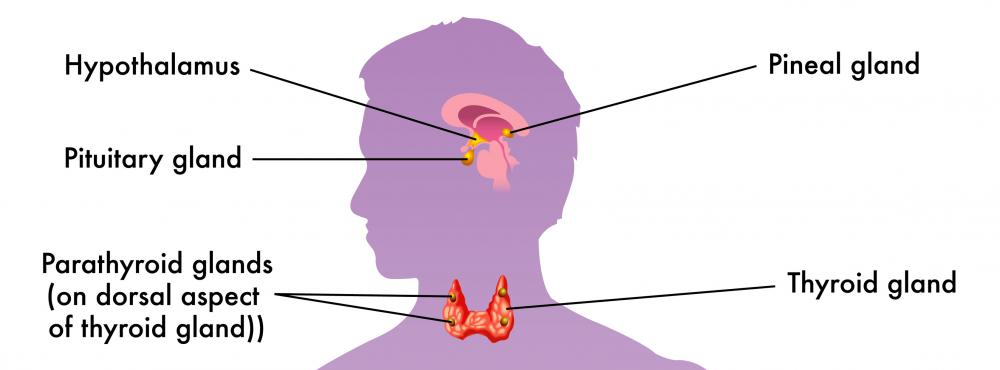At WiseGEEK, we're committed to delivering accurate, trustworthy information. Our expert-authored content is rigorously fact-checked and sourced from credible authorities. Discover how we uphold the highest standards in providing you with reliable knowledge.
What is the Pituitary Stalk?
The pituitary stalk is a small, funnel-shaped section of grey matter that connects the pituitary gland to the hypothalamus. It is used by the hypothalamus to send hormones down to the pituitary gland. The pituitary gland does not produce hormones unless instructed to do so by the hypothalamus.
The hypothalamus is connected to the pituitary gland by the pituitary stalk. The pituitary stalk measures only about 0.1 inches (3 mm) wide where it connects at the base of the hypothalamus and 0.08 inches (about 2 mm) wide where it connects at the top of the pituitary. It is connected to the pituitary gland in the posterior region.

The function of the pituitary stalk is to carry hormones created within the hypothalamus down to the pituitary gland. Hormones, including dopamine, are created by special cells in the hypothalamus. Once they have been synthesized, the hormones travel down the pituitary stalk and are released in the pituitary gland. The pituitary gland then follows the instructions encoded within the hormones.

Some of the hormones that originate in the hypothalamus instruct the pituitary gland to create other hormones, which it will then release into the bloodstream. Thyrotropin, growth hormone, corticotrophin, and gonadotropin are all created by the pituitary gland, but these hormones are not created until the gland receives instructions to synthesize and release them into the bloodstream from the hypothalamus. These instructions arrive in the form of hormones that the hypothalamus sends down the pituitary stalk.

Some of the more common hormones that travel down the pituitary stalk include dopamine and gonadotropin-releasing hormone. Dopamine is used by the body to regulate emotions and is critical to maintaining good mental and physical health. In the pituitary, its presence instructs the gland to stop producing prolactin, a hormone that assists in the creation of breast milk. Gonadotropin-releasing hormone is sent to the pituitary at the onset of puberty. This hormone instructs the pituitary to create gonadotropin, which in turn stimulates an increase in testosterone in males and an increase of estrogen and progesterone in females.

The pituitary gland itself is only about the size of a pea. Despite its small size, this gland is commonly referred to as the “master gland” because many of the body’s functions are regulated by the hormones released by the pituitary. The gland is vital to body function and protected within the brain by a small, bony structure. The pituitary is one of the main components of the endocrine system.
AS FEATURED ON:
AS FEATURED ON:















Discussion Comments
This ability of the hypothalamus and the pituitary gland to be able to communicate and send messages through the pituitary stalk is really something. And that pituitary gland is so small. It seems to be well protected.
Nevertheless, things do go wrong with the pituitary gland, like tumors or malfunctions of the gland. I have never known anyone who has had problems with their pituitary gland, but I would think it would be pretty serious.
I would like to know if there are any nutritional guides that would help to keep the pituitary gland healthy.
This relationship between the hypothalamus, the pituitary stalk and the pituitary gland is no less than amazing! What on earth stimulates the hypothalamus to produce and send down the proper hormones at the time they are needed, to the pituitary gland that sends them where they are needed.
It is really a very important function for our survival - activating the sex hormones, hormones controlling breast milk, and "feel good" hormones.
Post your comments